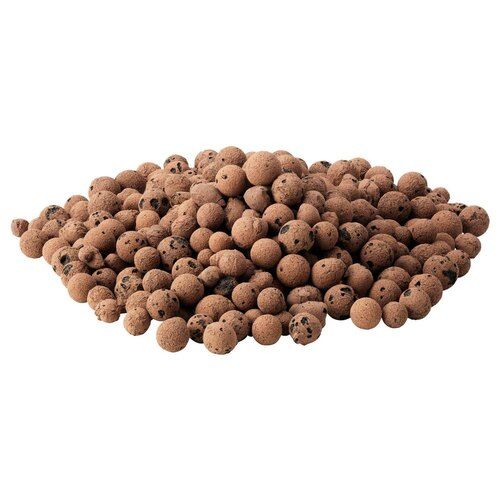LECA (Light Weight Aggregate) (Concrete Application)
We are the stalwarts in the domain of manufacturing, supplying, wholesaling, and exporting LECA ( Light Weight Aggregate ) (Concrete Application) These flavor grade chemicals are processed using pure and accurate ingredients that are procured from reliable and trusted vendors of the market. Our range is available in the market at leading prices in packs of different quantities.
Light Expanded Clay Aggregate (LECA) has several valuable uses and applications in the construction industry. Its lightweight and insulating properties, as well as its ability to improve soil structure and drainage, make it a versatile material in construction.
Here are some specific uses and applications of LECA in construction:
Lightweight Concrete:
LECA can be mixed with cement and other materials to create lightweight concrete. This lightweight concrete is used in construction to reduce the overall weight of structures while maintaining their strength and durability. It’s especially useful in high-rise buildings and precast concrete products.
Insulation:
LECA is an excellent insulation material. It can be used as an insulating layer in walls, roofs, and floors to improve energy efficiency and reduce heating and cooling costs.
Lightweight Fill Material:
In areas with poor soil conditions or where soil settlement is a concern, LECA can be used as lightweight fill material. It reduces the load on foundations and minimizes the risk of soil settlement.
Green Roof Systems:
LECA is used in green roof systems to create a lightweight growing medium for plants. It provides adequate drainage and reduces the load on the roof structure.
Lightweight Concrete Blocks:
LECA is used in the production of lightweight concrete blocks, which are widely used in construction for their ease of handling and reduced structural load.
Insulating Concrete Formwork (ICF):
LECA can be incorporated into insulating concrete formwork systems to create energy-efficient walls with high thermal resistance.
Lightweight Panels:
LECA can be used as an aggregate in the production of lightweight panels for wall and ceiling applications, which are easy to handle and install.
Tunnel Construction:
In tunnel construction, LECA is used as a lightweight backfill material to reduce the load on tunnel walls and roofs.
Pipe Insulation:
LECA can be used to insulate pipes and ducts, reducing heat loss and energy consumption in HVAC systems.
Bridge Construction:
LECA lightweight concrete is employed in the construction of bridge decks and other bridge components, reducing the overall weight of the structure.
Noise Barriers:
LECA concrete can be used to construct noise barriers along highways and railways, providing effective sound insulation.
Fireproofing:
LECA’s high melting point makes it suitable for use as an aggregate in fire-resistant concrete for fireproofing applications in construction.
Foundation Systems:
LECA can be used as a lightweight aggregate in the construction of foundation systems to reduce settlement and minimize the risk of subsidence.
LECA’s versatility, combined with its lightweight and insulating properties, makes it a valuable material in various construction applications. It helps improve energy efficiency, reduce structural loads, and enhance the overall performance and sustainability of buildings and infrastructure projects.
Light Expanded Clay Aggregate (LECA) is a versatile material that finds various uses and applications in construction and other fields due to its unique properties. LECA is made by heating clay pellets to expand them, resulting in lightweight, porous, and durable aggregate.
Here are some common uses and applications of LECA:
Insulation:
LECA can be used as lightweight insulation in walls, roofs, and floors due to its low thermal conductivity. It helps in maintaining a comfortable indoor temperature and reducing energy consumption.
Concrete:
LECA can be mixed with concrete to create lightweight concrete, which is ideal for reducing the dead load on structures such as bridges, buildings, and stadiums while maintaining structural integrity.
Lightweight Fill Material:
LECA is used as a lightweight fill material in construction to reduce the overall weight of structures. It is especially useful in areas with poor soil conditions or where soil settlement is a concern.
Horticulture and Agriculture:
LECA is used in hydroponics and soilless growing systems to provide aeration and moisture retention for plant roots.
It is also used in soil conditioning to improve drainage and prevent soil compaction.
Geotechnical Engineering:
LECA is used in geotechnical applications, such as lightweight embankments and slope stabilization, to reduce the weight on unstable soil and prevent erosion.
Water Filtration:
LECA can be used in wastewater treatment facilities and stormwater management systems to filter out impurities and pollutants from water.
Landscaping and Drainage:
LECA is used in landscaping for lightweight backfill around retaining walls and as a drainage layer in gardens and sports fields.
Sound Insulation:
LECA can be used in acoustic insulation applications to reduce sound transmission through walls, ceilings, and floors.
Fireproofing:
LECA’s high melting point makes it suitable for fireproofing applications in construction. It can be used as an aggregate in fire-resistant concrete and as a lightweight fireproofing material.
Art and Craft:
LECA pellets are used in art and craft projects, such as making lightweight sculptures and decorative items.
Lightweight Structural Panels:
LECA can be used to make lightweight structural panels for various construction applications, including walls, partitions, and ceilings.
Oil Spill Cleanup:
LECA can be used in oil spill cleanup operations to absorb and remove spilled oil from water surfaces.
Lightweight Aggregates in Manufacturing:
LECA is used as a raw material in the production of lightweight aggregates for manufacturing processes, such as the production of lightweight concrete blocks.
LECA’s lightweight and insulating properties, as well as its ability to improve soil structure and drainage, make it a valuable material in a wide range of applications in construction, agriculture, environmental management, and beyond. Its versatility and sustainable characteristics make it an attractive choice for various projects.
